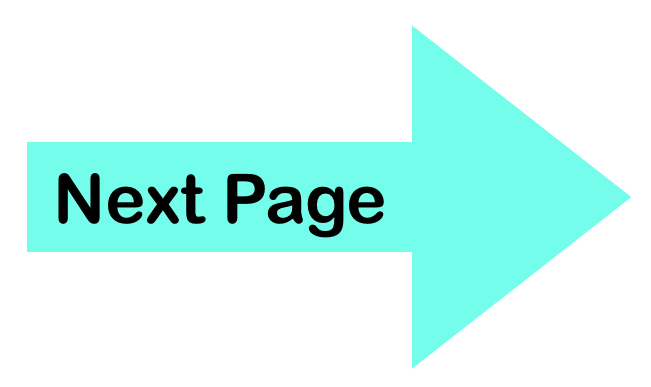Now that we’ve talked about the basic 46 Hiragana, the next step is to talk about the next set of 25 characters!
These characters look like regular hiragana, except for small symbols on the upper right corner. These symbols (either what look like quotation marks, or a small circle) tell you to pronounce them in a different way. Let’s get into them!
The G Sound Group (K→G)
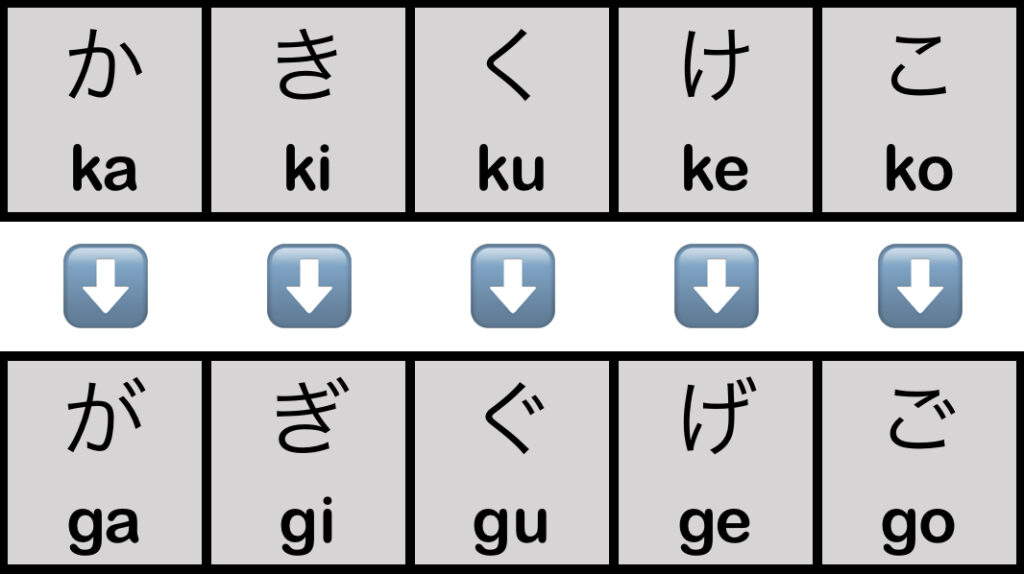
You can see that the small quotation marks tell you to change the “k” sound into a “g” sound.
The Z Sound Group (S→Z)
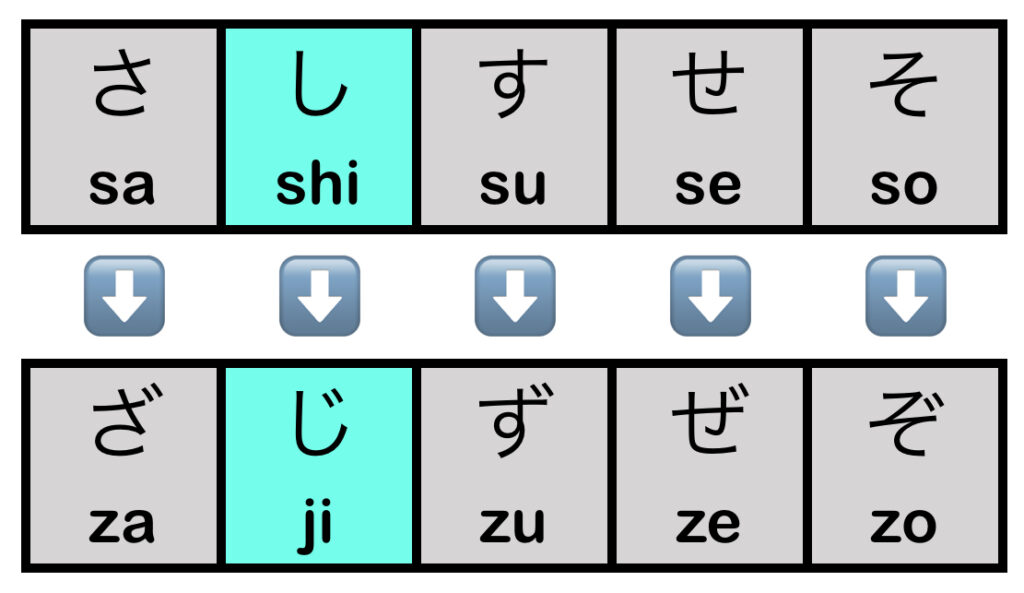
These characters change from an “s” sound to a “z” sound, with one exception. じ isn’t pronounced as “zhi” but instead as “ji”.
The D Sound Group (T→D)
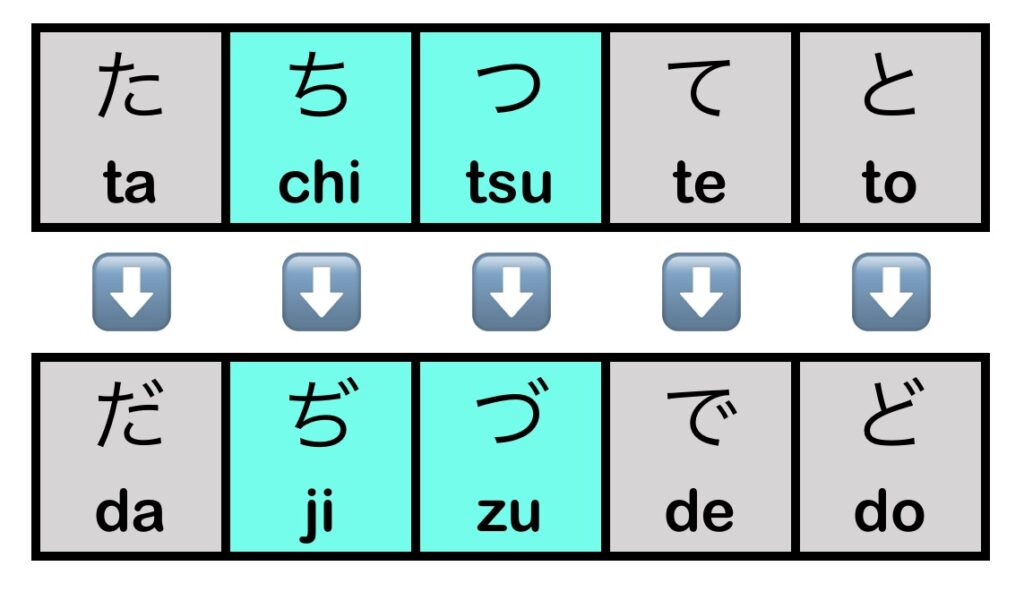
In this group there are 2 exceptions! ぢ is pronounced as “ji” and づ is pronounced as “zu”. At this point, there are two questions that you might have. Let’s address them 1 by 1.
First, we should talk about the difference between じ and ぢ. They are both pronounced as “ji” so the only difference is how often you will come across the characters. 98% of the time, if you hear the “ji” sound it will be the じ character.
Next, let’s talk about the difference between ず and づ. These characters actually do have different pronunciations, but the difference is very very small. (づ has a hint of a “z” sound in the middle whereas ず doesn’t.) There have been times when I hear a “zu” sound and I’m not sure if it’s ず or づ. The good news is that a majority of times it ended up being ず. In these cases, it’s actually better for you to make a mistake and get corrected because you more likely remember it more.
The B Sound Group (H→B)
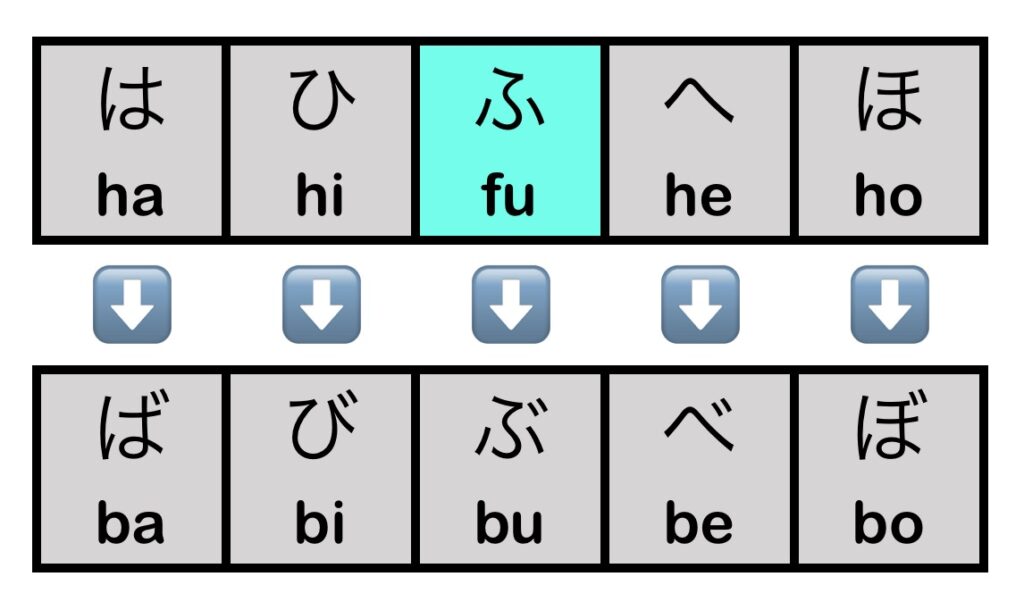
The next group is our last group that uses quotation marks. These characters go from an “h” sound to a “b” sound. Even ふ changes to a “b” sound, so it will be easy to remember.
The P Sound Group (H→P)
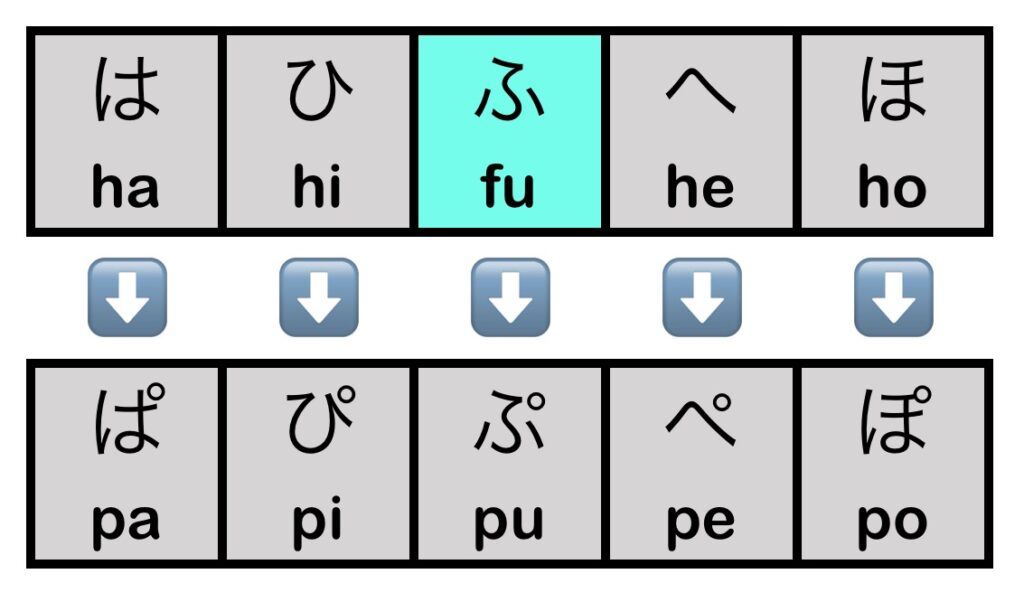
Our last group uses small circles instead of a quotation marks. These characters go from an “h” sound to a “p” sound. The character ふ again loses its irregular pronunciation, so it will be easy to remember.
Conclusion
So there you have it! Coincidentally, these symbols have names of their own. The quotation mark is called a dakuten mark while the small circle is called a han-dakuten mark. These 25 characters will come up again when we talk about something called Rendaku.



